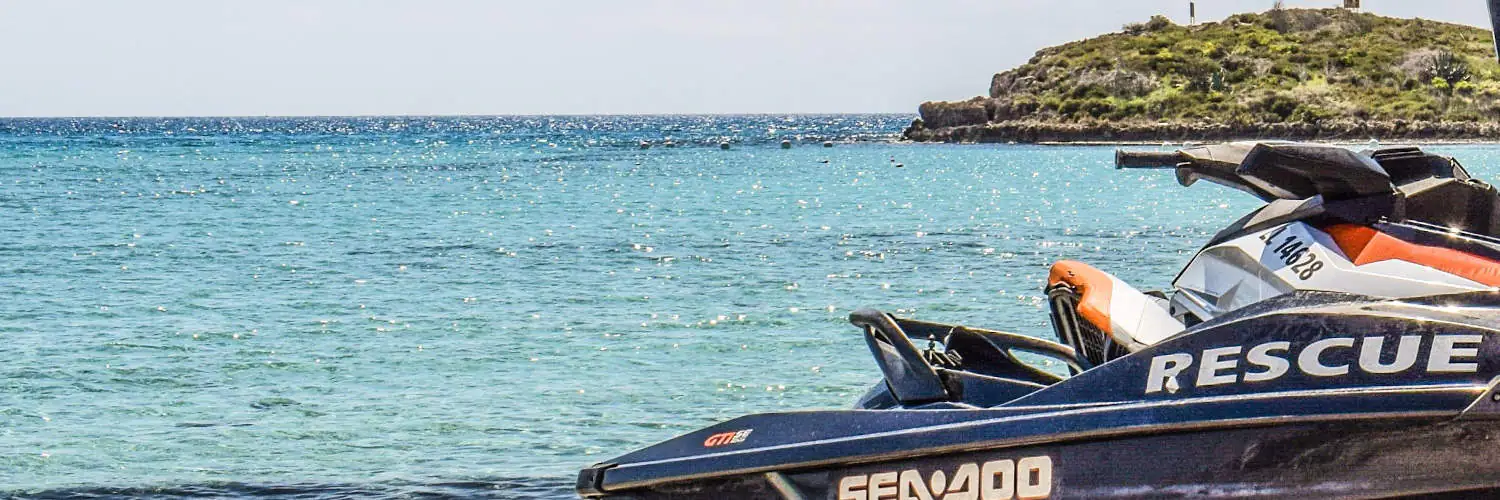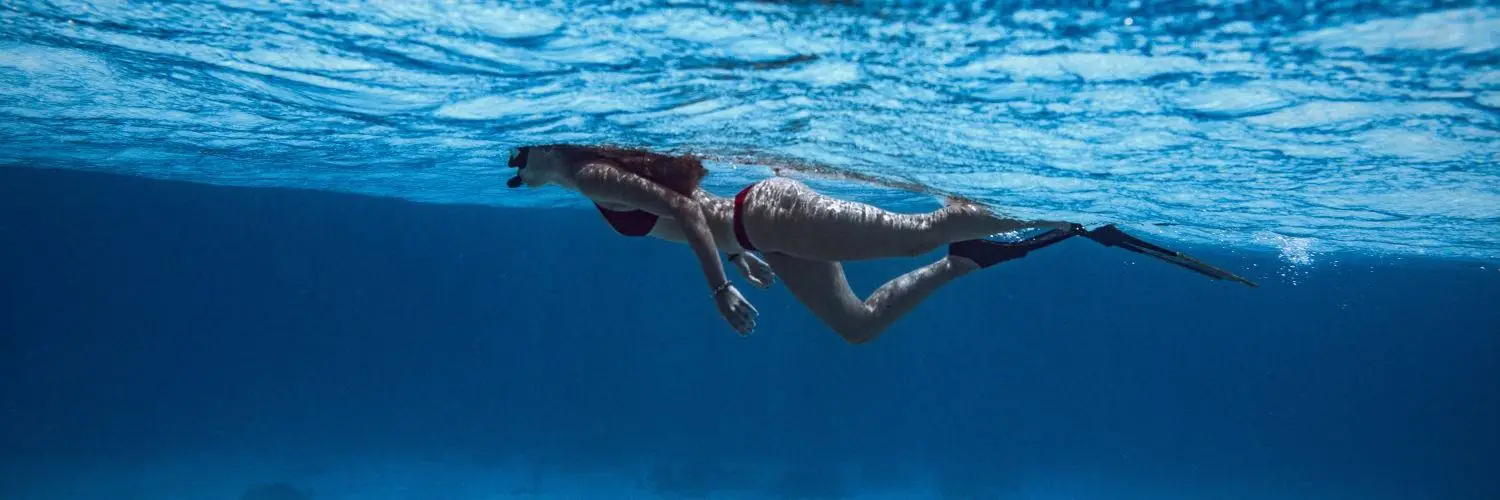Table of Contents
Snorkeling with Asthma: Safely Exploring Underwater With Respiratory Challenges
Asthma is a long-term breathing problem. It can be hard to do things like snorkel if you have asthma. When you have asthma, your airways can be swollen, and that can make it tough to breathe, especially when you’re active or around things that bother your breathing. Despite traditional concerns, medical experts and diving enthusiasts recognize that with proper management and precautions, individuals with asthma may still be able to enjoy snorkeling.
It is crucial for individuals with asthma to consult with their healthcare provider before engaging in snorkeling to ensure that it is safe for them to do so. In these talks, doctors check if asthma is okay and if snorkeling is safe. Healthcare providers may offer personalized advice and might suggest measures such as performing a pre-snorkeling check with diving equipment, having access to emergency medication like an inhaler, and choosing calm, allergen-free snorkeling environments to minimize risks.
While snorkeling can be an inviting aquatic adventure, it requires individuals with asthma to be proactive in managing their condition. Adequate preparation, including understanding one’s own asthma triggers and ensuring easy access to necessary medication, is imperative. By doing so, snorkelers with asthma can enhance their safety and enjoyment when exploring underwater environments.
Understanding Asthma and Snorkeling
This part talks about important things for people with asthma who want to go snorkeling. It looks at how asthma affects breathing and what to do to have fun while staying safe.
The Basics of Asthma
Asthma is a long-term breathing problem. It makes airways narrow, causing trouble breathing and making it hard to use lungs well. Symptoms may include wheezing, coughing, chest tightness, and shortness of breath. Triggers are varied and include allergens, cold air, exercise, and stress. The levels of seriousness are not the same for everyone. Asthma patients need to be careful about handling their condition by taking medicine and avoiding things that make it worse.
Snorkeling with Asthma
Snorkeling is an enjoyable water sport that allows observation of underwater life with minimal equipment; however, it does pose specific considerations for asthmatics.
- Breathing During Snorkeling: Snorkeling alters normal breathing patterns due to the use of a mouthpiece and the resistance of water. For those with asthma, this can cause concern as restricted airflow might trigger symptoms.
- Physical Exercise: Snorkeling is an exercise that requires physical exertion, and this exertion can sometimes provoke an asthma attack.
- Precautions:
- Medication: Always have a waterproofed inhaler or other prescribed asthma medication on hand.
- Experience: Build experience in a controlled environment before attempting open water snorkeling.
- Asthma Freedom Snorkel: Consider specialized snorkels designed to reduce breathing difficulties underwater.
Check asthma with doctor before snorkeling. Keep asthma okay. Use doctor for tests. Asthmatics should approach snorkeling mindfully that while the activity is accessible, potential risks should be weighed and prepared for accordingly.
Essential Pre-Snorkeling Considerations
Before indulging in the underwater adventure of snorkeling, individuals with asthma must prioritize their health and safety. Adequate preparation and selecting appropriate gear are pivotal for a secure and enjoyable experience.
Medical Consultation and Preparation
Consultation with a Physician: Before snorkeling, it is vital for an individual with asthma to consult a physician. Medical clearance is necessary to ensure that the individual’s condition is well-managed and to determine whether snorkeling could lead to physical exertion that may trigger an asthma attack. During the consultation, the physician will review the individual’s medical history, assess their current medication regimen, and possibly recommend a pre-snorkeling fitness plan to build endurance.
Education and Medications: Aside from securing medical clearance, individuals should educate themselves about asthma management in marine environments. They should carry a fast-acting inhaler and, if prescribed, use any preventative medications as directed prior to snorkeling.
Choosing the Right Snorkeling Gear
Snorkel and Mask Fit: A well-fitted snorkel and mask are crucial for anyone snorkeling, but particularly for asthma sufferers. The snorkel should allow for easy breathing, and the mask must fit snugly without being overly tight, to minimize leaks without restricting breathing.
Snorkel Vest Selection: To aid buoyancy and reduce the risk of overexertion, a snorkel vest is recommended. This gear can help maintain buoyancy without significant physical effort, which is particularly important for people whose asthma is exacerbated by exercise.
Material Quality: The material of the snorkeling gear should be non-irritant to ensure no unexpected allergic reactions occur that could complicate breathing.
By securing medical clearance, preparing adequately, and selecting the right gear, individuals with asthma can safely enjoy snorkeling.
Techniques and Safety Measures
In this section, targeted techniques for breathing and essential safety protocols are discussed to ensure a safe snorkeling experience for individuals with asthma.
Breathing Techniques
For asthmatics, mastering proper breathing techniques is crucial while snorkeling. Breathing exercises practiced regularly can improve lung capacity and control. Before diving, they should perform warm-up breathing exercises to minimize the risk of wheezing and shortness of breath. Once underwater, it is imperative to breathe slowly and deeply using the diaphragm to prevent restricted breathing. Asthmatics should use a snorkel with a purge valve to expel water and a float valve to prevent water intake. This equipment minimizes the effort required to breathe and reduces the buildup of dead air in the snorkel tube.
Safety Protocols and Emergency Preparedness
It is essential for individuals with asthma to follow safety protocols to mitigate risks in the underwater world. They should always inform the guide or a buddy about their condition and have a clear emergency action plan. Diving in cold water requires precautions, such as wearing a waterproof wetsuit to prevent chest tightness. They should ensure their mask fits well to avoid immersion of the face in cold water, which could trigger an asthma attack. Scuba diving requires more stringent assessments due to increased pressure underwater; snorkelers with asthma should consult with a healthcare provider before attempting to scuba dive.
Asthmatics should carry their inhaler or have other medications readily available and know the location of the nearest medical facility. They should snorkel in areas well-known for stable weather and calm water to reduce exertion. Guided snorkeling with experienced personnel who are trained in handling emergencies is also recommended for an added layer of safety.
For those with asthma, planning and practising the correct preventive measures can lead to a safer and more enjoyable snorkeling experience.
Environmental Considerations and Adaptations
People with asthma must be careful when they go snorkeling. They need to be aware of the water and look out for things that might cause their asthma to get worse. It’s important to make sure that snorkeling is safe for them. This means understanding the water and being careful about what might make their asthma worse while snorkeling.
Adapting to Water Conditions
When swimming with a snorkel, people with breathing issues should watch out for things in the water that might make it hard to breathe. Cold water can trigger asthma symptoms, so it is advisable to wear a wetsuit that retains body heat to minimize exposure to the cold air that can be present even in tropical waters. Saltwater mist can be a natural irritant; therefore, the use of a properly fitted snorkel and mask is crucial to prevent inhalation of the mist.
- Key points:
- Wear a wetsuit in colder water temperatures to maintain body heat.
- Ensure snorkel and mask fit properly to avoid inhaling saltwater mist.
Recognizing and Managing Environmental Triggers
Seeing and handling things that cause issues outside while swimming is important for people with asthma. Things like pollen and dust might not be as big of a problem under the water, but can still be a challenge when you’re on the land. Be cautious of the sea breeze, which can carry these irritants. Also, dirty air from boats and other places can make asthma worse; it’s crucial to swim away from busy spots. Snorkelers should also stay away from places with seeing smoke or trash. To prevent dehydration and exhaustion—conditions that may exacerbate asthma—maintain adequate hydration and monitor for signs of fatigue or cramps.
- Preemptive actions:
- Swim in clear water, away from boats and dirt.
- Stay hydrated to avoid exacerbation of asthma due to dehydration.
Maximizing the Snorkeling Experience
To enhance the snorkeling experience for those with asthma, careful preparation and an understanding of how to interact with the marine environment are essential. Making sure you feel good and safe under water lets you see a lot of exciting things under the water.
Creating Comfort and Enjoyment Underwater
For individuals with asthma, ensuring comfort underwater starts with a well-controlled asthma condition. They should consult their doctor before snorkeling to verify that their asthma is managed effectively and that it is safe for them to participate in such activities. When preparing for snorkeling, selecting the right equipment is critical. A wet suit appropriate for the water temperature and fitting snorkel tubes with minimal dead space to reduce CO2 buildup can make a significant difference. Also, to feel safer when snorkeling, people should understand their equipment. Practicing in a pool or shallow water to gauge comfort levels with the equipment and breathing techniques can build the foundation for a pleasant experience.
It’s also important to equalize the ears to water pressure changes by gently blowing against a closed nose while ascending or descending underwater. Swimmers with asthma should stay within areas where they can comfortably swim and stand up if needed.
Connecting with Marine Life Responsibly
Snorkeling offers an unrivaled opportunity to connect with marine life and experience the awe of nature beneath the waves. For a gratifying encounter, individuals should learn about the underwater world they plan to explore, including the types of marine species they might see. Engaging with PADI (Professional Association of Diving Instructors) or similar organizations for guidance on eco-friendly snorkeling practices is highly recommended. This could include learning how to float without touching coral or disturbing aquatic life which is vital in protecting delicate underwater ecosystems.
To stay healthy and help nature, people who snorkel and have asthma should keep far from sea animals. It’s kind to nature to watch and not bother the animals, and it also lowers the chance of an asthma attack. Keeping the snorkeling activity to areas of shallow water where they can feel safe and close to assistance if necessary also allows for a quick and easy return to the surface.
Further Learning and Community Engagement
Before going snorkeling, people with asthma should learn. Talk to a doctor first. Make sure asthma is controlled. Understand the dangers. Like, air pressure changes can hurt your lungs. Especially with water, it can be bad.
Exploration of snorkeling locations should be done with care. People with asthma may want to start in controlled environments. Lots of towns have programs for this need, making the experience safer and nicer. For example, the Professional Association of Diving Instructors (PADI) certifies snorkeling courses, which prioritize safety and are a great way to gain confidence and competence.
Experience counts when involving oneself in snorkeling with asthma. Local community initiatives often provide resources and avenues for swimming and snorkeling practice where participants can:
- Engage with experienced instructors
- Learn about selecting the appropriate wet suit
- Understand how to manage their condition in aquatic settings
The following are essential tips for individuals with asthma aiming to snorkel:
| Safety Tips | Description |
|---|---|
| Discuss with a Healthcare Provider | Confirm that snorkeling is a safe option for your condition. |
| Wear Proper Equipment | Ensure a well-fitting wet suit and mask for comfort and safety. |
| Exercise Caution with Environmental Factors | Be aware of triggers that may exacerbate asthma symptoms. |
| Engage in Pre-Snorkel Training | Take courses from accredited organizations like PADI. |
Joining local snorkel or dive clubs can create a friendly community spirit, turning snorkeling into a shared adventure instead of a solo effort. They often share up-to-date information, experiences, and tips that can help ensure a positive and safe snorkeling experience.








